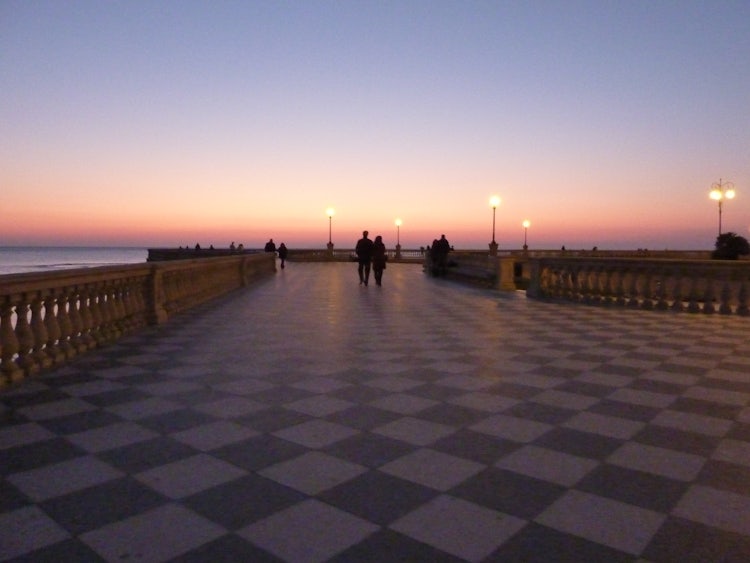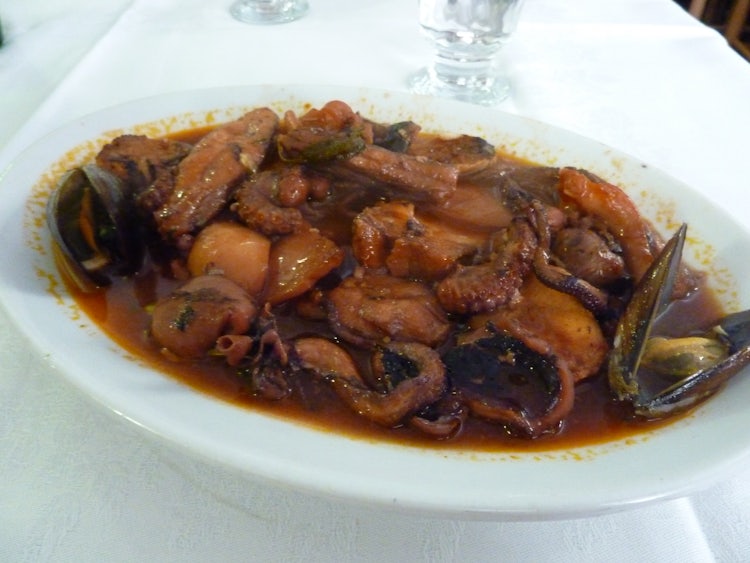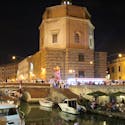Fill an Afternoon with a Visit to the Coast
Normally Livorno is used as a stepping stone to a more “lofty" destination. The busy port draws cruise ships, ferry boats and crowds of people looking to move onto a final destination...but before you leave the city, look into the many sites and activities available for all ages right here in Livorno.
With our list of things to see & do in this busy port city, we hope to change your mind and encourage you to dedicate a bit of time to discovering their unique sense of humour, excellent cuisine, and particular landscape that includes, “fossi," bridges, delicious fish dishes and boat rides.
1. Mercato delle Vettovaglie
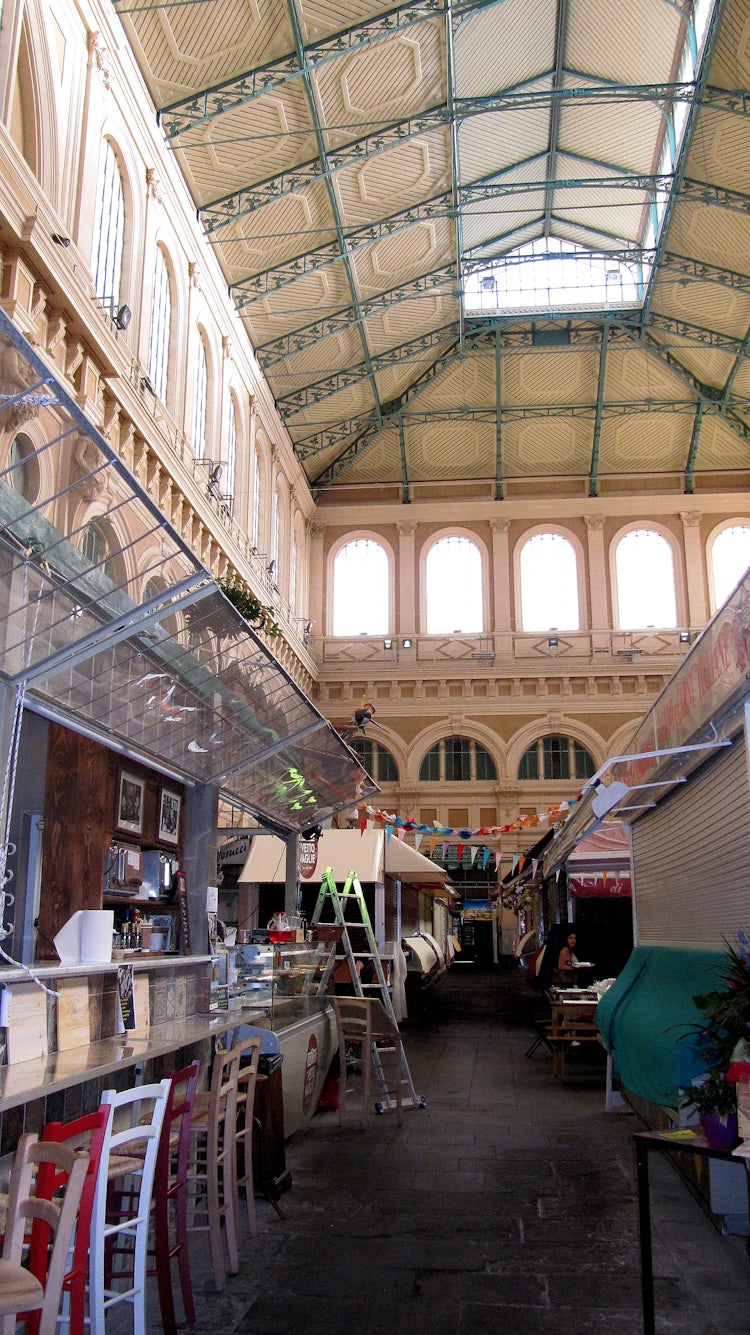
Mercato Centrale or the “Coperta"
The word “vettovaglie" means provisions for the military - and when they explained this to me everything seemed to fall into place, after all Livorno is a modern day invention which not only served as a commercial port to the Florence of the Medici Family, but also the first line of defense against the ever insistent pirates.
The market is perhaps one of the more interesting architectural structures in Livorno, built in the middle of the XIX century, it fully embraces the style of using iron and glass to creat a huge sturcture - almost as big as two football fields. Inside there are 200 stalls for fish, food and more. More meaning happy hour events, bars and restaurants which make use of the wealth of local products they have underhand at the market. The market, with its underground warehouse being feed from the Fosso Reale, is as unique as it is beautiful.
Two of my favorite places to eat within the Mercato include Poggetti, with quick meals and buffet happy hours, or the newly opened alle VettoVaglie, run by a group of sommeliers who are having fun presenting good wine, creative dishes in the form of “street & comfort" food and a bit of local color to Livorno.
2. Terrazza Mascagni
Built Upon the Destruction of WWII
The panoramic terrace stretches out over what used to be known as the Fort of the Cavalleggeri, and this fotress was comprised of a tower and a large defensive complex. After Italy was united under one government the fortress was given to the local government who had it dismantled in 1872 - they even took down the historic tower.
It wasn’t until 1925 that it was transformed into a showcase with a stupendous view and space for concerts, a stroll and a bit of leisure. Since it was a strategic port, Livorno felt the brunt of WWII, however the city ingeniously used the debris from the ruins after the continuous bombing in to enlarge the terrace to its present dimensions.
It was only just recently restored, and is now truly a picturesque point in the city.
3. “Fossi" Medicei of Livorno
Better Known as Il Fosso Reale
The word “Fosso" is equivalent to a moat, in fact the Fosso Reale follows the borders of defense of the city of Livorno. A canal, like those you find in Venice, are for irrigation or navigation. They are like little roads - and Livorno has its fair share of those as well. The buildig of the moat was a monumental task and its completion was executed by Claudio Cogorano with the help (in a manner of speaking ) of 2000 slaves and 5000 farmers. In 2002, these waterways were added to UNESCO’s World Heritage sites.
One of the best ways to see this amazing feat is to participate in a boat tour, (also available in English and German) starting from the port and taking you into the city. A fantastic idea for those with children or who would prefer to relax and not do a lot of walking. Click here for the official website for Livorno By Boat.

4. Piazza della Repubblica
One of the Largest Squares in Livorno
Without a doubt one of the largest and most particular squares in the city; Livorno in particular uses the squares as meeting places, so it was important to the that the squares were beautiful as well as functional. The Piazza della Repubblia was built with the intention to modernize the old streets into something more useful for the 18th century transport (realized between 1838-45).
Rising above the Fosso Reale which floats below the construction, the square extends 220 meters in length - from above you might never even realize you are actually on a bridge or as it is sometimes called by the locals the “Voltone". It was also known as Piazza of the Grand Duchy because of the two prestigious statues on either end: Ferdinando III and Leopoldo II - both instrumental in the construction and protection of Livorno.
5. Venezia Nuova
The True Historic Center of Livorno
The only part of Livorno after WWII that managed to conserve a large part of its historic landmarks and architecture, among which include several churches and buildings. Though it doesn’t align with the Medicea construction it is the true historic center of the city.
In the summer there is a festival that celebrates the area. Read our article for more information.
6. L'Acquedotto Leopoldino
Sometimes called Acquedotto di Colognole or Acquedotto Lorenese
Between the growing number of inhabitants and the increasing number of boats looking to replenish their on board supplies, water was definitely a growing concern. These acqueducts supplied the city with fresh clean water for almost 100 years (from 1816 - 1912), this was an enormous public works operation which was designed to replenish the dwindling freshwater supply to the city of Livorno. The construction ran into many roadblocks (the French occupation in 1799, the death of the architect) but finally the Queen of Etruria, Maria Luisa (and Napoleons sister), got things moving and finished.
Starting in the hills, at the source Colognole, the aqueduct runs over 15 km. Several areas along the tract have been cleared for hikes and trails where you can find a series of stone arches, small buildings, tunnels and cisterns all used for the purification and transport of the water.
7. Cisternino of Livorno
The True Historic Center of Livorno
There are actually three cisterns along the aqueduct designed to purify the water on its route guaranteeing a fast and controlled distribution at the final destination: Cisternino di Pian di Rota, Cisternone and Cisternino.
They were constructed between 1829 and 1848 in a neoclassical style. Cisternino (the Little Cistern), though it was intended as a part of a complex system of purification plants and storage tanks, never came into use. It currently houses a venue for cultural activities and, on the lower floor, a theatre. Cisternone (the Big Cistern) is one of the more important examples in Italy of neoclassical building and it can be found on one of the main vias that leads to Piazza della Repubblica. The interior is surprisingly captivating, surrounded by pillars and ribbed vaults. At the bottom of the tank is a half-hidden inscription as a reminder of Leopold's grand aqueduct project connecting Colognole with Livorno.
8. Aquarium
2.000 creatures & over 300 different species
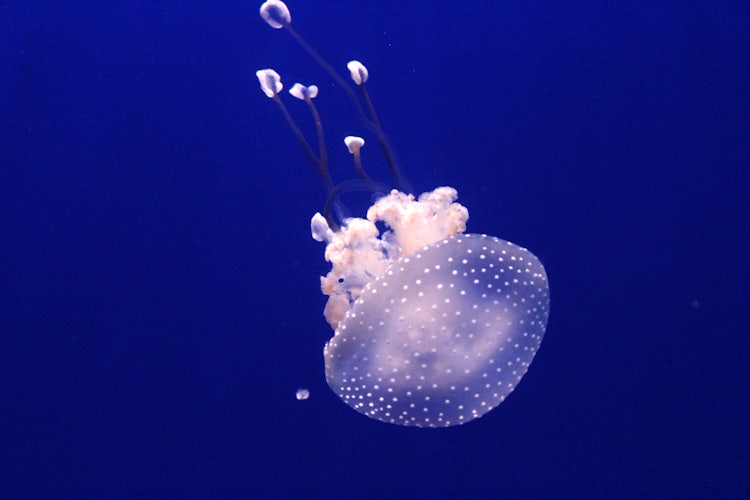
To me there is something simply mesmerizing about the colors and forms of that mysterious world underwater. The Livorno Aquarium is a great venue for all ages, with a diverse itinerary of fish, archaeological explorations and now they even have an area dedicated to reptiles and more. Read here for more info, times and where to park.
9. Monumento dei Quattro Mori
The Mascot of Livorno
Comprised of two very different sections, a marble statue and a bronze base, this monuments presides over the pier.
The Statue of Ferdinand I of Tuscany, recognized for building the Fortress which protected Livorno from the persistent invasion of pirates, moors and saracen, was the first piece of the monument.
The four moors chained at his feet was an afterthought (so to speak.) The detail and skill are stunning...even if the subject manner is a bit touchy. The artist behind this work is Pietro Tacca, also responsible for other masterpieces, for example the fountains in Piazza SS Annunziata in Florence.
Even though the statue was to commemorate Ferdinand I, the people of Livorno (with their wicked sense of humour) have “renamed" it after the four bronze statues and not their illustrious leader, thus the name monument is "Four Moors" or in Italian "Quattro Mori".
Due to their precarious position so close to the port, the monument was dismantled and sent in part to the Certosa di Calci and in part to Poggio Caiano during the war, to save it from destruction.
It is said if you can find the view point where all four noses are visible...you are promised good luck. (I do believe I found it!)

10. Fortezza Vecchia/Fortezza Nuova
Both the old and the new
Plans to build the castle started with Cosimo I de' Medici in 1519 and the completion of the structure happened under the rule of Alessandro de' Medici in 1534. Originally, there was the castle built by the Pisans in 1377 called Quadratura dei Pisani probably built on the ruins of an ancient Roman castrum.
On 19 March 1606 Ferdinando I proclaimed Livorno a "city" in a ceremony which took place inside the fortress. It features a pentagonal layout, with imposing walls in brick and is surrounded by the Medici moat (Fosso Reale). There is a canal system which was built to connect the two forts.
The New Fortress represents the old "Baluarte di San Francesco", designed by Bernardo Buontalenti. The construction of the new fortress dates from the late sixteenth century, when the Medici commissioned the architect to devise a plan for the new city of Livorno.
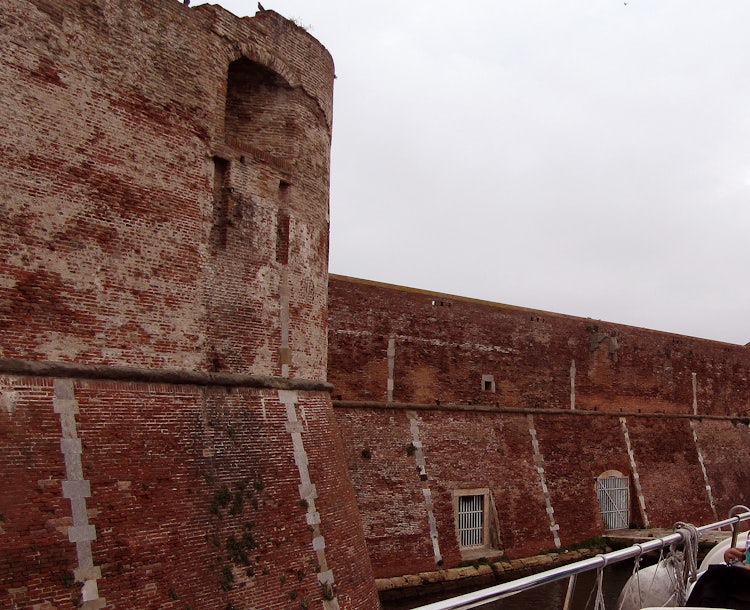
11. Cemeteries
Final Resting Places to a Grand Mix of Persons
The number of cemeteries dedicated to those outside of the Catholic church is a testament to the Medici intention to make the city of Livorno grow...lifting bans (but not prejudices) against outsiders - especially the Jewish. Livorno expanded fast. In fact, Livorno is noted for having not only a wide diversity in cemeteries but also churches of many different creeds thanks to its mingling of populations and its fame as an international port.
Perhaps one of the oldest of its kind in the the Mediterranean area, the monumental English cemetery in Via Verdi which dates from the 1640s. Long before the English Cemetery in either Rome or Florence. It was the final resting place for Protestants of various nationalities who were living or staying in Livorno and other parts of Italy during the 17th, 18th and first part of the 19th century. In addition to the many British citizens, there are also French Huguenots, Germans, Swiss, Americans and several American marines buried here.
Recently restored, there is the monumental Jewish cemetery in viale Ippolito Nievo which was active from 1840 till the early 1900’s. Inside the cemetery of about 16.000 square meters, you will find tree lined paths, cypress trees over a hundred years old and an interesting collection of plants, tombs and monuments from this period, many of which have an important artistic value.
In the beginning of the 16th century the ‘Livornina Law’ was passed, stating that all Jews who settled in the port town of Livorno would be guaranteed their freedom, including freedom to worship as they pleased. Thus creating a “ghetto-less" Jewish settlement which grew from 110 to 3000 persons rather quickly. Some of the more prestigious names buried here include: the Montefiore, Attias, Franco, Modigliani, Rosselli, Racah, 27 rabbis and masters of the Jewish religion, of which is also Elia Benamozegh.
You will also find cemeteries dedicated to Germans, Dutch, Armenian and Turkey...to name just a few.
12. Via Grande

stretching from the port to Piazza Repubblica
When you take into consideration that Livorno was practically decimated after the war, and the few things that have survived or have been revived really only go back to the 1600’s - then you can begin to appreciate the unique beauty in the modern day construction. One of my favorite things to do in Livorno is to just absorb the city atmosphere, this via connects the port with the main square and is lined with covered walkways, spacious squares and lots of shops.
13. Cacciucco, the "C5"
This is not a place but it is still an institution
Yes, Livorno even has some “not to be missed" culinary traditions... I know Italians who will do the long haul out to the coast just to eat a plate of authentic cacciucco (the C5 stands for the 5 letter Cs in the word cacciucco - the only Italian word to have 5 letter c's). This fish stew is available with and without fish bones...you choose. The ingredients consist of a mix of fish, traditionally the leftovers or the less enticing selection, cooked down in a red sauce served over toasted bread (generously brushed with garlic).
This is a treat not to be missed out on - and, while you're at it, follow it up with a ponce di rumme… that will get your blood pumping.
